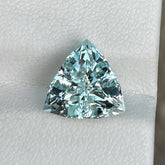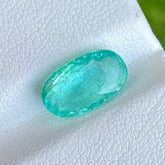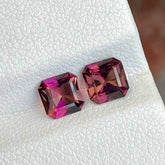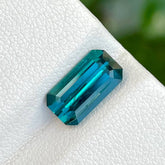Specifications of Tourmaline | Gandhara Gems
17 Oct 2020
0 Comments
List of all Specifications of Tourmaline
Tourmaline is extremely complex borosilicate that comes in every color; in fact, more than 100 colors and is still counting. Therefore, a range of chemical compositions occurs inside Tourmaline. Also, some crystals show zones of multiple colors. Tourmaline History: In 1702, Tourmaline was first introduced in the West when the Dutch imported it from Sri Lanka. Tourmaline Visuals: Tourmalines are pleochroic to varying degrees. Different colors or shades can be seen from different angles of the stone, and clever cutters can optimize a gemstone pleochroism. Paraiba Tourmaline is the most famous Tourmaline, with a hue of neon light blue to green. This is followed by the blues of Indicolote, the bright pinks of Rubellite, and the mixed colors of Watermelon Tourmaline with green and pink resembling a Watermelon.Specifications of Tourmaline:
| Hardness on Mohs Scale | 7 to 7.5 |
| Toughness | Good |
| Luster | Vitreous Specific |
| Gravity | 3.0 - 3.1 |
| Refractive Index | 1.62 - 1.65 |
| Cleavage | Difficult / Indistinct |
| General Chemical Formula | Various (It is a complex boro-silicate of Aluminium, Magnesium, Iron and copper) |
Crystal Form:
Tourmaline crystals are prismatic (3,6 or 9 sided); the faces of the triangular prisms are often convex. It looks like long rods often multi-colored with pronounced striations along the length. Multiple tourmaline crystals often grow side by side. So, Specifications of Tourmalines are simple and for more details you can read the full articles.Common Inclusions in Tourmaline:
Irregular thread like cavities, healed fractures and flat films occurs, along with wavy or unstable incipient fractures and healed fissures are normally running across the length of tourmaline crystals. Tourmaline Mines: Paraiba in Brazil is producing very little to our knowledge, Santa Rosa mine, Minas Gerais, Brazil. Oro mine in the Oyo Valley and Edoukou mine in Western Nigeria. Kabelubelu and Timbuktu in Malawi. Kunar Laghman, mines in Afghanistan. Tourmaline Value: The value of Tourmaline has climbed up in the past year with the demand from Asian countries. Brazilian Paraiba is the most in-demand, with at least 70% color saturation. Mozambique produces some Paraiba colored Tourmaline similar to the Brazilian Paraiba. Rubelite has zoomed in value too, especially very large gemstones. Indicolite, we believe, is a good investment at the moment. There are good bright Indicolite blue tourmaline gemstones in the market with bright Paraiba-like colors that are not cuprian, i.e. copper-bearing. These are, by far, cheaper than the cuprian Paraibas (about 5-10% of the price). Bright green Tourmalines from Pakistan, Afghanistan and Nigeria also represent good value with some of the big and bright gemstones resemble the green hue of Paraiba Tourmaline. The value of all Tourmalines will be reliant on the 4 C’s, but the color and intensity of the color are paramount with few dark modifiers. Treatment of Tourmaline: Some Tourmalines (Specifications of Tourmaline) are often heated to around 700 degrees to change or improve the color. That color change is very stable. Pink, Purple, and blue cuprian Tourmalines are heated to produce the in-demand ‘Paraiba’ color. We have been presented with Rubelite Tourmalines that have been irradiated by Cobalt, gamma irradiation to change the color to bright pink, which can be very difficult to detect. Occasionally Tourmaline is oiled to conceal fractures, but not often because it is not a stable treatment. Reports have also heard of copper diffused Paraiba Tourmalines; however, tests have proved such treatment can be easily detected. As a result, leading Gemologists now acknowledge that tests for Copper and other isotope ratios will need to become an essential tool for gemology (Read How to become a Gemologist), especially when it comes to controversial reports on diffused vs non-diffused color analyses in these types of gemstones. So if purchasing a Paraiba, make sure you invest in a certificate from a top lab with the best equipment. So, check out the rough tremolite for sales. So, you can read more on different articles of our website.
Tags:













Leave a comment
Please note, comments need to be approved before they are published.